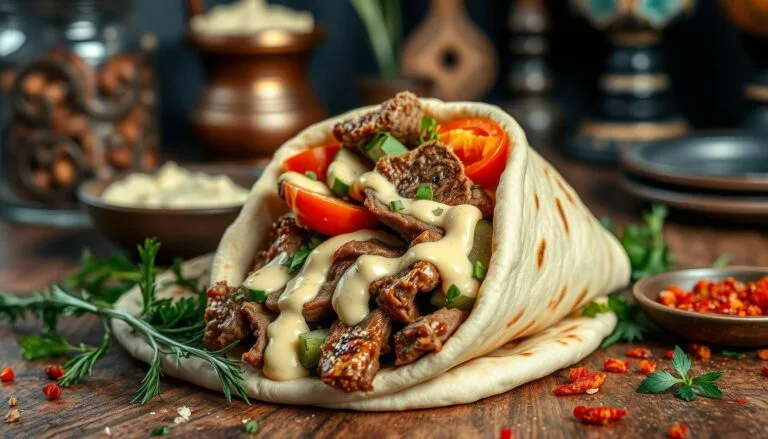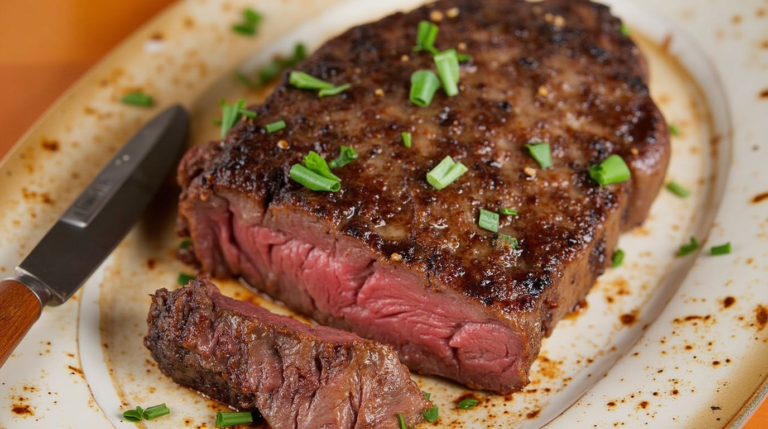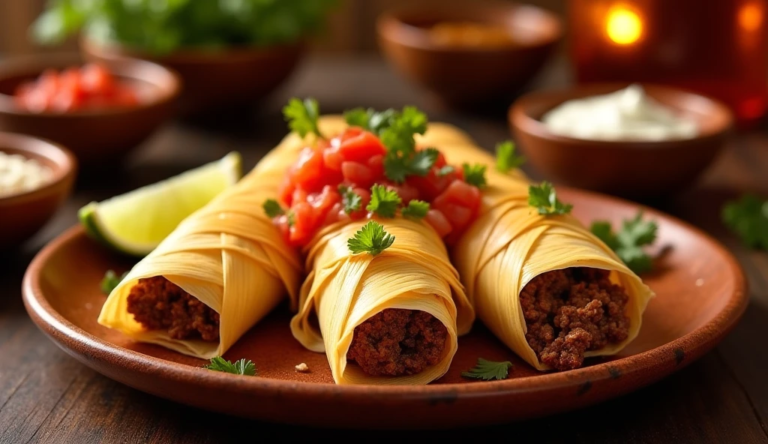Authentic Mongolian Beef Recipe: Step-by-Step Guide
Table of Contents
Introduction
Mongolian Beef Recipe is a favorite dish for anyone who enjoys the combination of tender, stir-fried beef coated in a deliciously sweet and savory sauce. Despite its name, the dish isn’t actually from Mongolia but is a creation inspired by Chinese-American cuisine. If you’re craving restaurant-style Mongolian beef but want to make it at home, this step-by-step guide will walk you through the process, ensuring that you get that same rich flavor and tender beef texture.
What is Mongolian Beef?
Mongolian beef is a popular stir-fry dish featuring thinly sliced beef, typically flank steak, stir-fried with green onions and served in a rich, sweet, and savory sauce made from soy sauce, brown sugar, garlic, and ginger. It’s commonly paired with steamed rice, making it a filling and flavorful meal.
The Origins of Mongolian Beef
Though Mongolian beef recipes has no direct ties to Mongolia, it draws inspiration from Chinese stir-fry techniques. It gained popularity in American Chinese restaurants, becoming a staple dish that people associate with bold Asian flavors.
The American Adaptation
In the U.S.,Mongolian beef recipes evolved into a sweeter version of traditional stir-fry dishes, using a soy-based sauce with brown sugar for caramelization. This adaptation became the version most people are familiar with today.
Ingredients for Mongolian Beef
Key Ingredients for Authentic Flavor
- Beef (flank steak or sirloin): Flank steak is the most common choice due to its tenderness and ability to absorb the sauce well.
- Soy sauce: This serves as the base of the sauce, offering salty umami flavor.
- Brown sugar: Provides sweetness and caramelization.
- Garlic and ginger: Essential for adding depth and fragrance.
- Green onions: Adds a fresh element and a slight crunch.
- Cornstarch: Used for coating the beef and thickening the sauce.
Substitutions for Specific Ingredients
- Tamari can be used in place of soy sauce for a gluten-free option.
- Honey can be substituted for brown sugar if you prefer a more natural sweetener.
Essential Tools for Preparing Mongolian Beef
Wok vs. Frying Pan
While a wok is traditional for stir-frying, a large frying pan can work just as well. The key is ensuring the pan is hot enough to quickly sear the beef without overcooking it.
Preparing the Beef
Choosing the Right Cut of Beef
Flank steak is ideal because it’s lean and cooks quickly. Slice the beef against the grain into thin strips to ensure it stays tender during the stir-frying process.
How to Tenderize Beef for Stir-Fry
For extra tenderness, coat the beef in a little cornstarch and let it sit for 15 minutes before cooking. This step helps lock in moisture and ensures the beef develops a crispy exterior when stir-fried.
Making the Sauce
Sweet and Savory Sauce Components
The sauce is the heart of Mongolian beef recipes. Combine soy sauce, brown sugar, garlic, ginger, and water to create a sweet, savory, and slightly sticky sauce. For a bit of heat, add crushed red pepper flakes.
How to Adjust Spice Levels
If you prefer your Mongolian beef spicier, you can add more red pepper flakes or even a dash of Sriracha sauce. For a milder dish, reduce or omit the heat altogether.
Stir-Frying the Beef
Cooking the Beef Perfectly
Heat the wok or frying pan until it’s nearly smoking before adding the beef. Stir-fry in small batches to avoid steaming the meat. You want the beef to sear and develop a nice crust, which gives it great texture and flavor.
Avoiding Overcrowding in the Pan
Overcrowding the pan causes the beef to steam instead of fry, leading to soggy meat. Work in batches to maintain high heat and allow the beef to brown properly.
Combining Beef and Sauce
Getting the Perfect Sauce Coating
Once the beef is cooked, return it to the pan and pour the sauce over the top. Stir everything together so the beef is well coated and the sauce thickens. The goal is to have a glossy, sticky sauce that clings to the beef.
Serving Suggestions
Best Side Dishes for Mongolian beef recipes
Mongolian beef recipes is typically served with steamed white rice, which absorbs the flavorful sauce. You can also pair it with fried rice, noodles, or sautéed vegetables for a complete meal.
Tips for Making the Best Mongolian Beef
Common Mistakes to Avoid
- Don’t overcook the beef. It should be seared quickly on high heat.
- Avoid using too much sauce. You want just enough to coat the beef, not drown it.
- Don’t skip the cornstarch coating—it’s essential for getting that crispy texture.
Variations of Mongolian Beef
Vegetarian and Vegan Alternatives
For a plant-based version, substitute the beef with firm tofu or seitan. Use tamari or a vegan soy sauce for a completely vegan dish, and adjust the sauce accordingly for flavor balance.
Storing and Reheating Mongolian Beef
Mongolian beef recipes can be stored in an airtight container in the fridge for up to 3 days. Reheat it in a pan over medium heat to maintain the texture of the beef. If freezing, place the beef and sauce separately to preserve flavor and texture.
Nutritional Information
Mongolian beef recipes is rich in protein and offers a balance of carbs from the sauce. For a healthier version, you can reduce the amount of sugar and opt for leaner cuts of beef.
Conclusion
Mongolian beef recipes is a delicious dish that’s surprisingly easy to make at home. By following these simple steps, you can recreate a restaurant-quality meal in your own kitchen. Whether you prefer it mild or spicy, this recipe can be customized to suit your taste. Enjoy it with rice or noodles for a satisfying and flavorful meal!
FAQs
Can I use chicken instead of beef?
Yes, chicken is a great alternative. Simply replace the beef with thinly sliced chicken breast and follow the same cooking steps.
What is the best substitute for soy sauce?
Tamari is an excellent gluten-free substitute, or you can use coconut aminos for a soy-free option.
How long can Mongolian beef recipes be stored?
Mongolian beef recipes can be stored in the refrigerator for up to 3 days in an airtight container.
How can I make Mongolian beef spicier?
Add more red pepper flakes or a splash of Sriracha to increase the heat level in the sauce.
Can Mongolian beef recipes be frozen?
Yes, you can freeze Mongolian beef recipes. For best results, store the beef and sauce separately to avoid sogginess when reheated.
Share Your Experience With us
There are no reviews yet. Be the first one to write one.







